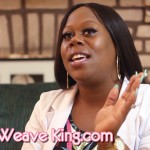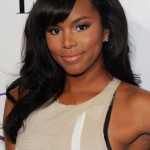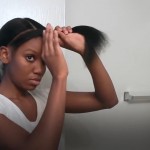What is Your Hair Type?
Hair type is usually categorized into four categories: Straight, Wavy, Curly and Kinky. What category do you think your hair falls under? The different types of hair have different needs in terms of styling, maintenance and care. This article will help you figure out what type of hair you have so that we can recommend the best products for your specific needs.
Fast Facts about Hair Types
Straight hair is the most common hair type in the world. It ranges from a grade 1 (fine and very soft) to grade 4 (coarse and kinky). The grades refer to how tightly curled your hair is. Grade 1 refers to extra fine, silky strands while Grades 3-5 include hair that is coarser and more tightly curled.
Hair type can change over the years due to aging, hair care products, hair coloring and hair treatments (e.g. hair relaxers). Some people may notice hair becoming easier to style or curlier while others may see hair becoming brittle, with less luster and increased manageability.
A hair type chart has been created to help you find the hair care product that best suits your hair. Keep in mind that hair types are often mixed, meaning that there may be a few different hair types existing in your hair. Straight hair – hair that is usually smooth, shiny and with a defined curl pattern. Wavy hair – hair that is usually wavy with a semi-defined curl pattern. Curly hair – hair that may be extremely curly with an undefined curl pattern or it may have some defined curls depending on how curly hair is cut and styled. Kinky hair – hair that is very tightly coiled, kinky hair has very defined, tight curls and can be very difficult to maintain. The hair type chart is divided into these four hair types:
- Straight hair
Straight hair has a glossy, sometimes lustrous look that comes from its fine texture and low density. If your hair is straight you will probably notice hair falling flat right after washing it or hair that doesn’t have a defined wave or curl.
Straight hair is usually very manageable and can be styled with a flat iron, blow dryer or curling iron. It’s the hair type that requires the least amount of hair care products since hair is low density (less hair per square inch). If your hair is straight you might prefer hair care products that are designed for hair of low to medium density. That’s because hair products that are too heavy or concentrated may weigh hair down and make hair look limp, dull and damaged.
- Wavy hair has a natural wave pattern but hair is not as curly or wavy as hair that has some curl (hair types 3 & 4).
Wavy hair is very similar in appearance to hair that’s Type 2 except hair tends to be straighter and more manageable. Hair often looks like it has a slight ‘S’ shaped pattern when styled and hair is easier to straighten than hair that’s Type 3 or 4. Wavy hair can be styled with a flat iron, blow dryer or curling iron and hair may look softer after air-drying.
Wavy hair isn’t always easy to style, depending on how wavy hair was cut. What tends to happen is hair can look wavy at the hairline but hair partings in the middle of hair can look straight. This is because hair was cut for styling purposes; to create a wavy hair line and not for maximum curl definition. Wavy hair types usually have a medium density rating, meaning that they need mid-range products (e.g. hair spray, hair gel) that can add hold and control hair without weighing hair down.
- Curly has a lot of natural texture but it is not as curly as Kinky (hair type 4) hair.
Curly hair has a very defined and prominent curl pattern. Hair usually has some frizz to it because of the curling pattern that is present in hair. Products are used on curly hair to control hair’s frizziness, add shine and definition to curls, create and maintain soft hair texture, decrease hair breakage and hair damage.
Hair Type Chart for Curly hair:
- Kinky has very tight curls that are usually defined and with a kink in the curl pattern (hair types 3 & 4). Hair is often dense, coarse, curly and frizzy hair type 4 hair is the hair type that requires the most hair products.
Kinky hair has a defined kink in its curl pattern and hair looks very curly, like hair type 3 hair. However, hair is usually much coarser than hair type 4 hair because it’s tighter and more dense (hair has less give). Hair looks frizzy from top to bottom and hair will look and feel dry unless hair is hydrated properly. Curly hair products for hair types 3 & 4 are the same but hair products should be designed to help hair maintain its natural/unprocessed state, which includes shine, softness and reduced frizziness.
Kinky hair often looks dull or damaged when it’s not maintained properly. If hair isn’t hydrated with hair products designed for hair of this type, hair will break easily and hair cuticles will look rough and damaged.
- Curly Kinky hair is wavy hair with tight, kinky curls. Hair tends to be drier than hair that’s Type 2 or 3 and hair needs daily moisture maintenance.
- Coiled hair has a very round curl pattern and hair is kinky hair (hair type 4). Hair is usually on the drier side because there’s so much hair definition present and hair needs moisture to maintain its softness.
Coiled hair can be difficult to manage for many hair types; hair is tight, kinky hair that’s very curly hair type 4 hair. Like hair type 4 hair, hair can be dry so hair needs moisture to maintain its softness and shine. Coiled hair usually has a lot of body because it’s tightly coiled.
- Wavy Kinky hair is the combination of Curly hair and Kinky hair (hair types 1 & 4). Hair can be very dry, coarse and frizzy but looks soft and shiny when hair is styled properly.
Wavy kinky hair is hair that’s very curly hair type 4 hair (kinky hair) with a wavy hair pattern. Hair is much drier than hair that’s Type 1 or 4 but hair doesn’t exhibit the dryness of hair that’s Type 4 hair alone and has a shine to its curls in addition to softness.
What hair type are you? Are you satisfied with your hair? If not, I hope these hair types will help you to diagnose if your hair is dry or damaged. Research hair care products for your hair type and use hair products that will help to produce hair with a texture similar to your natural hair. Many of us have different hair textures because hair is composed of so many strands. I have wavy/curly hair but it is mostly Type 4 hair. The hair type chart can help us to understand hair types in a visual form, hair texture and hair care regimens that support hair health. Learning about your hair type or the hair types of people close to you will improve your hair care regimen and increase the chances that your hair will grow longer healthier strands.
I hope you’ve enjoyed the hair type chart for hair types. If you have any questions or hair care recommendations, please leave a comment below the post. I’d love to hear from you! Have a beautiful day! 🙂













